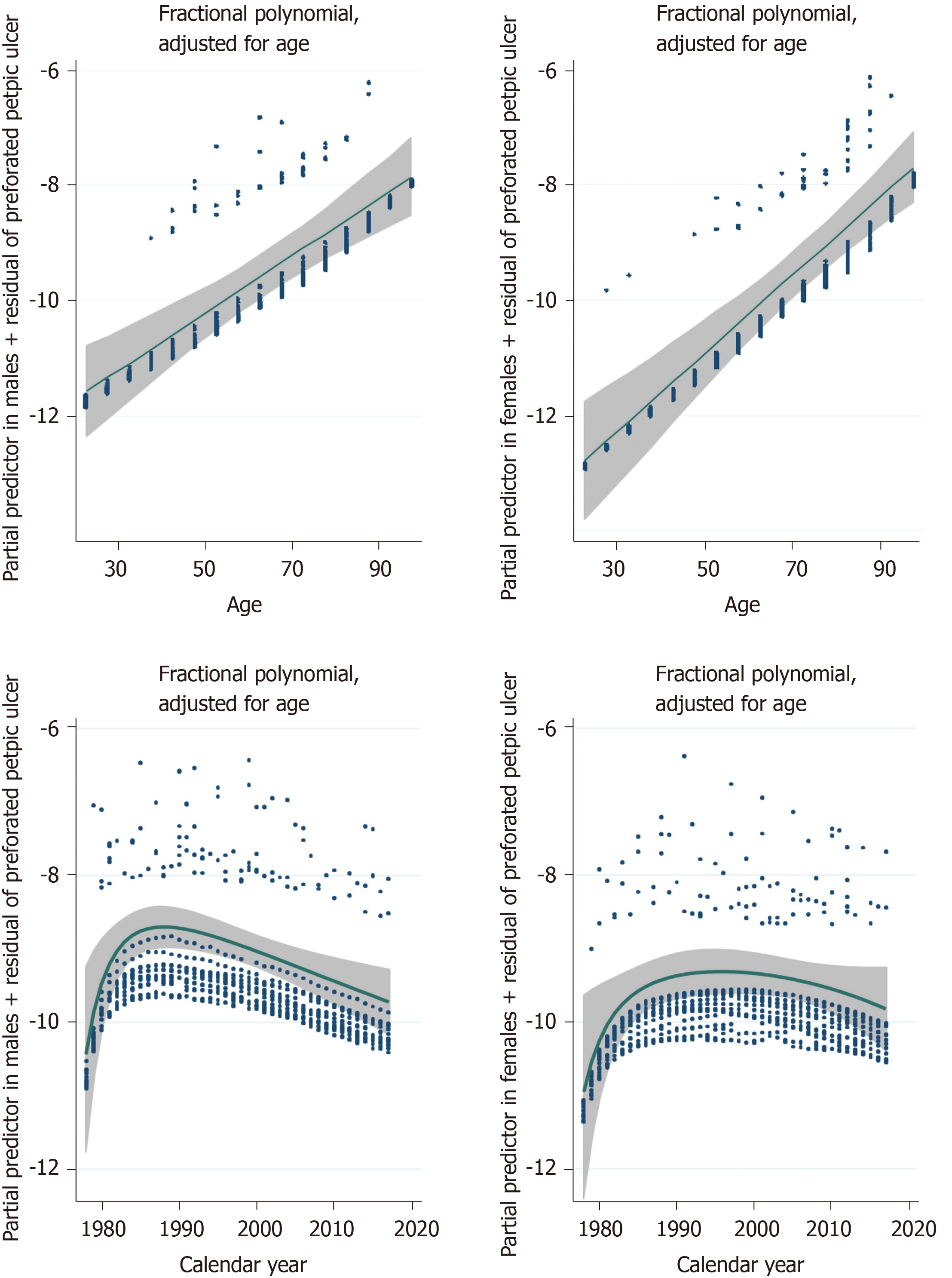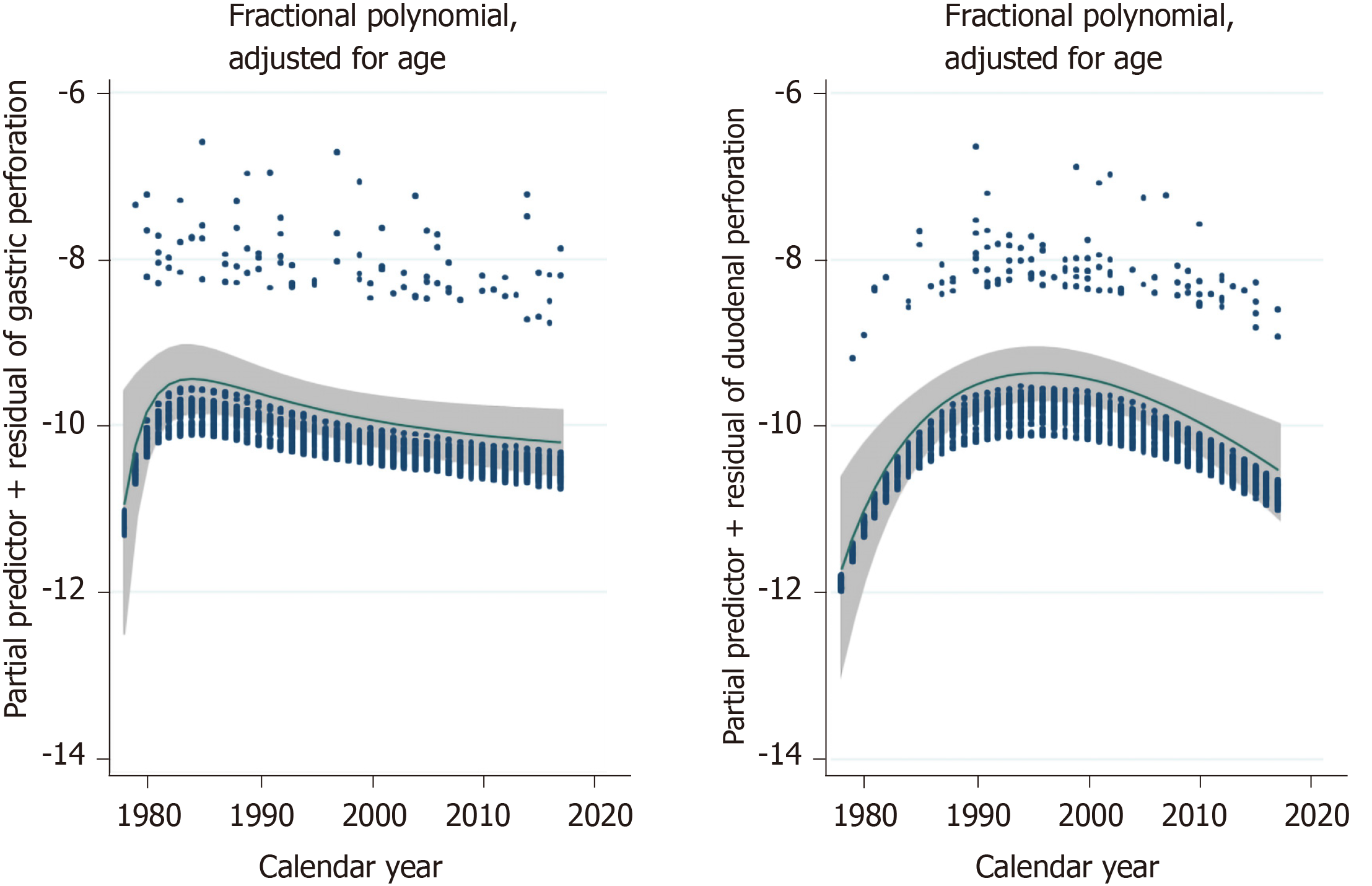Copyright
©The Author(s) 2020.
World J Gastroenterol. Sep 21, 2020; 26(35): 5302-5313
Published online Sep 21, 2020. doi: 10.3748/wjg.v26.i35.5302
Published online Sep 21, 2020. doi: 10.3748/wjg.v26.i35.5302
Figure 1 Effects of age and calendar year on the number of patients presenting with perforated peptic ulcer.
Data are Poisson regression with fractional polynomials. 95% confidence intervals are shaded grey, and the y-axis is a logarithmic scale. Left, males. The effect of age was linear in both males and females, without an upper limit. Incidence increased, peaking 10 yr earlier in males than in females.
Figure 2 Effect of calendar year on the number of patients presenting with perforated gastric ulcer (left) and duodenal ulcer (right).
Data were Poisson regression with fractional polynomials. 95% confidence intervals are shaded grey, and the y-axis is a logarithmic scale. The incidence of gastric ulcer perforations peaked around 1984, whereas the peak of duodenal ulcer perforations was approximately 15 yr later.
Figure 3 Relative survival in each American Society of Anesthesiologists group of patients who survived the first 100 postoperative days.
ASA: American Society of Anesthesiologists.
- Citation: Dadfar A, Edna TH. Epidemiology of perforating peptic ulcer: A population-based retrospective study over 40 years. World J Gastroenterol 2020; 26(35): 5302-5313
- URL: https://www.wjgnet.com/1007-9327/full/v26/i35/5302.htm
- DOI: https://dx.doi.org/10.3748/wjg.v26.i35.5302











